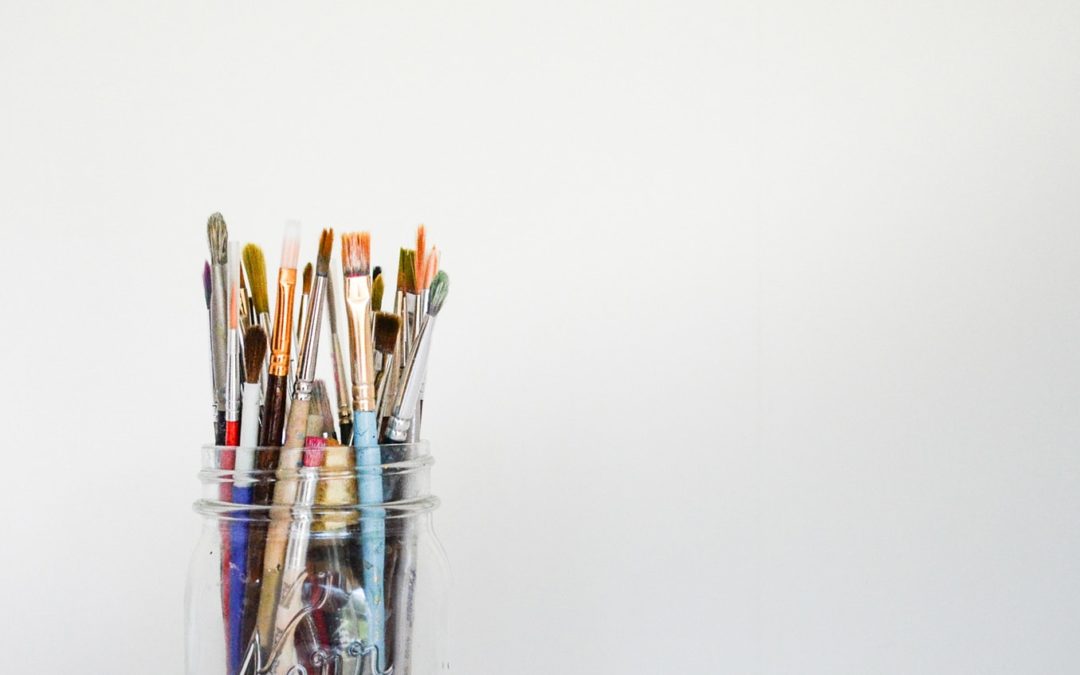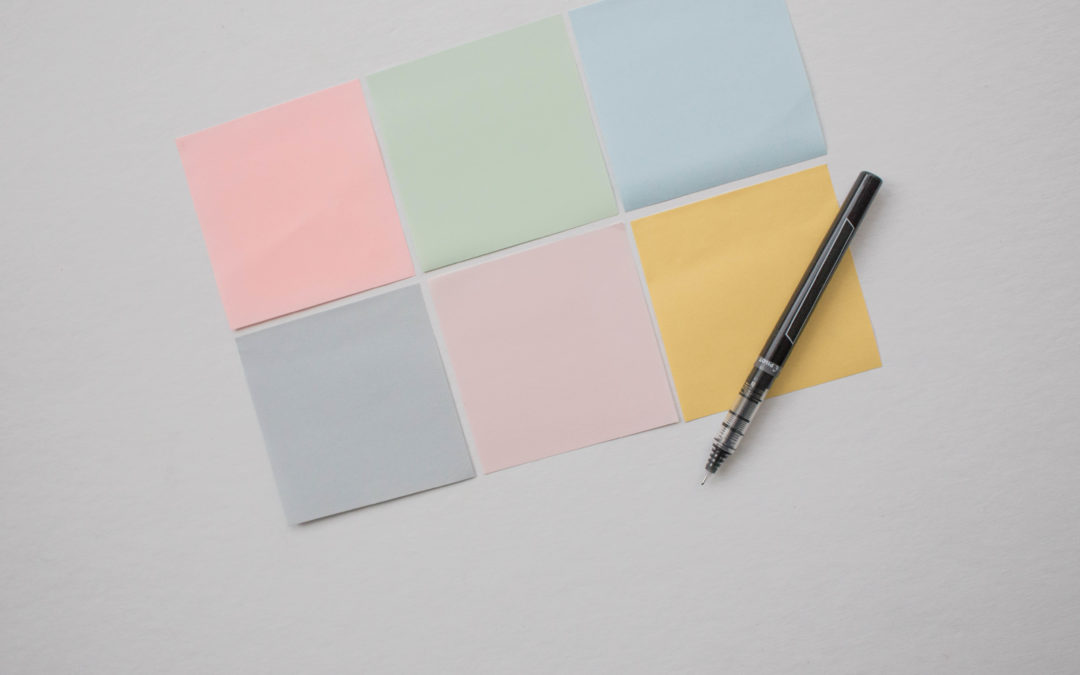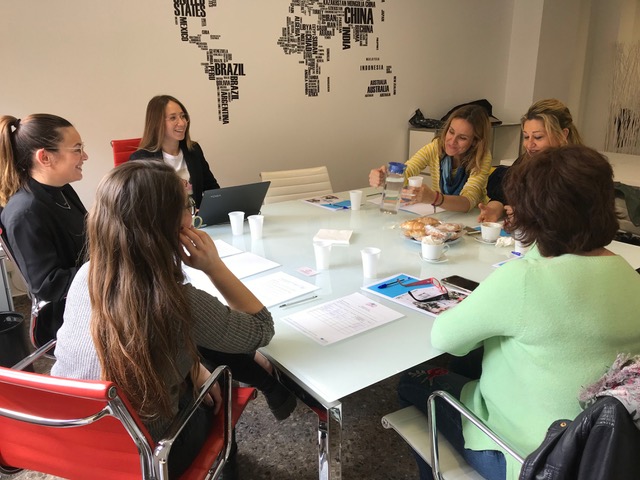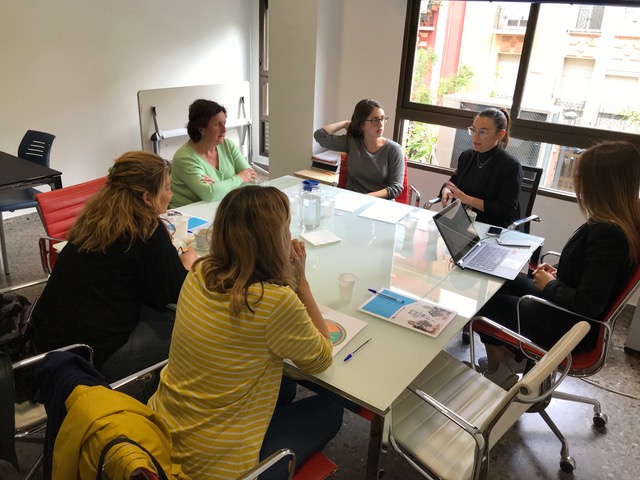
by admin | Aug 9, 2019 | News
UK results and what’s to come!
Female Artists and Creatives in the UK are underrepresented in almost all of the creative sectors. From the lack of female-made art in London galleries, to the minimal representation of women in higher positions in creative fields, gender inequality is still ever present! So, what can we do to help?
 The Global FemART project has been created to help female Artists and Creatives across Europe to develop their own businesses on an international level. With the help of Inova Consultancy, Materahub, Fundacja ARTeria, FyG Consultores and Odisee, the Global FemART project aims to inspire more women to take the leap into globalised trade and bridge the creative sector’s gender gap!
The Global FemART project has been created to help female Artists and Creatives across Europe to develop their own businesses on an international level. With the help of Inova Consultancy, Materahub, Fundacja ARTeria, FyG Consultores and Odisee, the Global FemART project aims to inspire more women to take the leap into globalised trade and bridge the creative sector’s gender gap!
To kick start this project, each partner conducted focus groups and interviews in different countries to understand these issues from the perspective of female artists and creatives and coaches in the same field. The results were very interesting and, in the UK, revealed some invaluable points!
During this session, six female artists and creatives, from the Sheffield area, came together to discuss how artists and creatives develop their creative businesses and start to think about globalisation and reaching an international market.
Getting to know these wonderful ladies allowed Inova to truly see the artistic talent Sheffield has to offer! The group consisted of Musicians, Graphic Designers, Sculptors, Textile Designers and a Silversmith! This diverse group helped the Inova team to understand the barriers faced by female artists and creatives and the specific training modules which would help them to develop both personally and professionally, in relation to business globalisation.
From the UK focus group, it became clear that experiences of gender inequality vary between different creative fields. With regards to internationalising a creative business, many artists and creatives need tools to help with organisation, planning, business management and developing an international plan.
So! What’s coming next?
Inova Consultancy’s methodology of the Mentoring Circles™ has been adapted to create the Artist Circles™ for the Global FemART project! Created in 2001, the Mentoring Circles™ methodology combines peer and one-to-one mentoring support to help people through change, development and personal growth. Using all the information gathered from Artists and Creatives, the Artist Circles™ have been adapted from Inova’s original methodology to suit the specific needs of this audience. Focusing on different aspects of business growth, with a global outlook, the Global FemART Artist Circles™ are set to help women across Europe to succeed in internationalising their creative business and developing both personally and professionally.
For more information on the project and the latest updates about our training, check out the Global FemART Facebook page: https://www.facebook.com/GlobalFemArt/

by admin | Jul 1, 2019 | News
by Anna Ochmann
A huge, rectangular industrial hall — Silesia of my childhood is peppered with them. But this one differs from a typical factory hall. The cleanliness and intense glow of fluorescent lamps make you feel like you are not in a hall, but rather in an operation theatre. Plus the ‘equipment’. The large, open space is filled with a maze of strange metal-glass ‘cabinets’ containing large spool-disks. I gaze with delight as one of them spits a steady long print filled with X-s and 0-s arranged in Mickey Mouse’s drawing… In a moment, with specific crackling-and-rattling noise, the duck’s feet are slowly printing… ‘Donald Duck’, I shout, happy that I recognised another X-0 character…
I zealously fill all the shapes of Disney characters with crayons sitting on the ground in front of the row of ‘wardrobes’. A tangled web of printers connected to two computers (also the size of cabinets) lurks above me. It’s ‘George’. I still remember the noise of air conditioning — regular, but after a while less and less perceptible. A constant temperature in the room is very important. George should not be overheated.
I sharpen the pencils while my grandfather patiently explains what it is all about. The strange contraptions count salaries for miners and print their ‘payslips’. There are only two such machines in Poland. The second one works for the Central Statistical Office in Katowice. Mining is a very powerful industry in Poland in the 1980s, so it can afford to buy such equipment. And, thanks to my Grandfather, I get to know THIS word…
Computer.
***
My parents belong to a generation of Radio Free Europe which is illegal in the then Poland. Its characteristic signal has accompanied me from the earliest childhood. Broadcasts and songs by Jacek Kaczmarski shape me in my salad days — as much as ‘unofficial’ reading. To this day, I remember the first sentences of Hemingway’s For Whom the Bell Tolls or Gore Vidal’s Creation devoured during some sleepless nights. But my childhood is also haunted by a different sound. Strange. Muffled. We are not allowed to talk about it to anyone, neither at school, nor at kindergarten, nor at the playground. The sound is coming out from under the blanket, where my parents rewrite the clandestine Solidarity bulletins. They do their undercover work by means of an ordinary typewriter, although it lacks any tape and carbon paper. Instead, a dedicated paper is applied — waxy and quite difficult to fill because one has to hit the keys as hard as possible. The muffling blanket is then a must: in the socialist blocks of flats made of prefabricated concrete panels, sound conductivity goes beyond the wildest expectations. The hits leave convex marks on the paper. One need to cover them with ink and make some duplicates. The quality is poor, and the number of copies obtained from a single ‘matrix’ — limited. That is the reason why so many underground workers like my parents are active. Nobody knows about text editors or home printers at that time, not to mention photocopying.
My mother then ‘spreads’ the produced leaflets in my sister’s pram. Once she loses a bag including both the ‘hot stuff’ and her documents. I remember the fear of arrest pervading our family. But this is a completely different story…
***
Rainbow flag in the bottom right corner. 48 kB of RAM. 3.54 MHz of power. Joystick. And, at the same time, the first computer keyboard in my life — made of rubber (sic!). Plus an inseparable cassette player. ZX Spectrum.
Squeals, squeaks, and creaks torment my ears while uploading — from a cassette tape recorder — ‘Boulder Dash’, my first computer game. It takes place in a labyrinthine world full of stones and diamonds. There is also a shooter called ‘Commando’ (from my perspective, something for boys). And a race titled ‘Turbo Esprit’ (in general, also boy-targeted).
At home, the radio is no longer heard (the TV takes its place), so I miss that from time to time, in the evening programme, Scout Broadcasting Station of the Polish Radio emits the so familiar squeaks and creaks. It’s enough to record them and load the latest game from the cassette…
Several years later. Impatient waiting for Dad’s return from Germany. The real Germany, Western. And for Amiga 500. It’s like a jump to a very remote galaxy. Motorola processor. 0.5 MB of RAM (expandable to 8MB!). And, above all, no more cassettes — ‘disks’ are used instead. Floppy disk —another new word. The computer has a 3.5-inch drive and stereo sound. It displays 4096 colours…
I remember playing ‘Lemmings’… and paging through a 13-volume illustrated encyclopaedia to see what these cute animals really look like.
***
And then the world speeds up. I still remember the large dish of satellite TV, which covered most of the window. My dad’s first mobile phone, which had a form of a suitcase with an attached handset. It resembled landline telephones, which long remained unavailable to many Poles (unless you had connections) even it is after the revolution of 1989 and Poland is developing in a very dynamic pace. The receiver was heating up so much that burned one’s hand in few minutes, which inevitably led to shorter calls.
I study at the Academy of Fine Arts in Kraków. I manually draw my entire diploma, all drawings, projections, cross-sections, and visuals. According to the statement expressed by one of my professors, the student who can draw by hand, can draw everything, every time, and everywhere — contrary to the poor wretches who got used to working only with computers and therefore are completely dependent on the access to the electric power supply.
I get my first computer from my grandpa as a reward crowning my graduation. A large box plus an even bigger screen. It’s special. Dedicated to graphics. It stands in my ‘studio’, that is, on the built-in balcony. In the winter, the frost easily pierces the thin and leaky window frames and makes my fingers numb when I try to understand how ‘Word or ‘Excel’ work. In the summer, I have the impression that I am sitting in a terrarium built specifically for a tropical species of reptile. And yet I stubbornly try to do my best with Word and Excel. Not to mention Corel draw…
I write this text sitting in a comfortable bus running for an international seminar. I write on a laptop weighing less than 2 kg. I use free wi-fi, Wikipedia, and photos taken with a smartphone, whose capabilities and functions are not even used by me in 10% … Applications on the phone, programs on the computer — they surround me creating opportunities I have not dreamed of as a child or student.
I am from the generation that is still — and will be long — active, professionally active. We had to face the digital revolution in our professional life. Also in art, in design. In access to information. In understanding and applying new tools.
But recently, during my classes with architecture students, watching how proficient they are using these tools of the digital, global world, I wanted them to return for a moment to the ‘roots’ and to reflect upon the white card and the ‘old-school’ 2B pencil.

by admin | May 23, 2019 | News
Foundation ARTeria organised a meeting of a Focus Group for the“Global FemArt – Supporting Female Artists and Creatives to Globalise their Business” project on 14th May 2019 in Kurort Qultury Gajowa 9, in Zabrze, Poland.
The main aim of the session was an in-depth needs analysis to complement the hard data of previous activities with first-hand testimonials so as to enable the partnership to develop training material that truly takes into account the specific needs of female artists and creatives running their own creative business. The event was prepared by Anna Ochmann and Wenanjcusz Ochmann, who was also a main facilitator and led the discussion.
The participants, 8 female artists and creatives from the Silesia area, discussed together about their artistic and vocational development, about their educational background, occupational and sectorial experience, personal competences, experience as female artists/creatives running their own creative businesses, and about possibilities of internationalisation of their work. The starting point for this discussion was a specially prepared questionnaire, which they completed at the beginning. Then the facilitators engaged the focus group in a discussion about the questionnaire and asked participants for feedback. The questions and the topics outlined aimed at exploring the personal knowledge of the participants, their critical awareness and their need to develop and improve their entrepreneurial competences among the 15 presented in the EntreComp (the comprehensive study carried out by the European Commission on the 15 core entrepreneurial competences identified in the Entrepreneurship Competence Framework).
The participants represented various areas in cultural and creative sector – we hosted visual artists, craft artists, but also an actress and musicians (vocalist and instrumentalist). This diverse group showed the potential of female art in Silesia! But we also talked about the barriers faced by female artists and creatives in their vocational development.

by admin | May 17, 2019 | News
At FyG Consultores we support the professional and personal development of artist and creative women. To reach this goal, we are part of the Global project FemArt, in which we participate with partners from different European countries: Materahub in Italy, Artery in Poland, Odisee of Belgium and Innova Consultancy UK.
Global FemArt aims to make it easier for creative women entrepreneurs to develop their business by creating a program that combines mentoring and online training. Thus, we want to promote the increase of personal and professional confidence of creative women, and provide them with tools for their business to grow. To achieve this, the project is divided into two parts: the first part, which is being developed now, aims to know and analyze firsthand the needs of women in the sector so later, during the second part, start promoting a quality training program, networking events and mentoring.

From FyG we are ready to start, so on April 24 we organized a group discussion (Focus Group) in our offices, having the pleasure of including the participation of creative women from different profiles. During one afternoon, we were able to know the needs and desires of different entrepreneurs, which was very inspiring and fruitful, both for us and for them. Thus, a very interesting debate was created in which they told us about them, their experiences and stories. It was debated about the challenges they deal with day by day, however, we discovered that they all had a common goal, to see their creative projects grow, improving their capacities related to the business world, and contributing something different to the market.
The FyG Team wants to thank all the women that joined us that day.
This is just the beggining of Global FemArt, we are looking forward organizing more events, ¡Stay tuned!

 The Global FemART project has been created to help female Artists and Creatives across Europe to develop their own businesses on an international level. With the help of Inova Consultancy, Materahub, Fundacja ARTeria, FyG Consultores and Odisee, the Global FemART project aims to inspire more women to take the leap into globalised trade and bridge the creative sector’s gender gap!
The Global FemART project has been created to help female Artists and Creatives across Europe to develop their own businesses on an international level. With the help of Inova Consultancy, Materahub, Fundacja ARTeria, FyG Consultores and Odisee, the Global FemART project aims to inspire more women to take the leap into globalised trade and bridge the creative sector’s gender gap!








